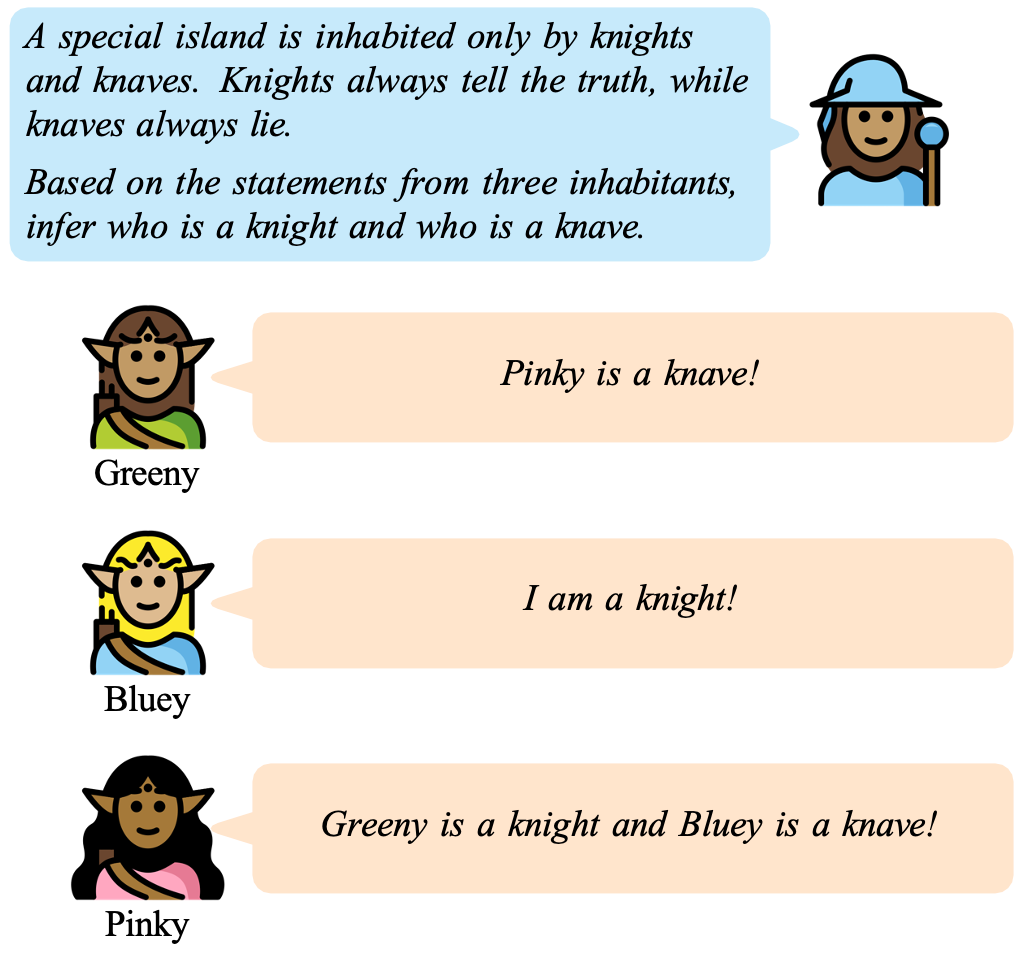Datasets:
You need to agree to share your contact information to access this dataset
This repository is publicly accessible, but you have to accept the conditions to access its files and content.
I hereby agree to not upload this data publicly without the authors' consent.
Log in or Sign Up to review the conditions and access this dataset content.
TruthQuest
We introduce TruthQuest, a benchmark for suppositional reasoning based on the principles of knights and knaves puzzles. Knights and knaves problems represent a classic genre of logical puzzles where characters either tell the truth or lie. The objective is to logically deduce each character's identity based on their statements (see Figure 1). The challenge arises from the truth-telling or lying behavior, which influences the logical implications of each statement. Solving these puzzles requires not only direct deductions from individual statements, but the ability to assess the truthfulness of statements by reasoning through various hypothetical scenarios. As such, knights and knaves puzzles serve as compelling examples of suppositional reasoning.

Figure 1: An instance of the knights & knaves puzzle. By reasoning about the characters’ statements and their truthfulness, it is possible to deduce that Greeny and Bluey must be knights, while Pinky is a knave.
Our benchmark encompasses problems of varying complexity, considering both the number of characters and the types of logical statements involved. Specifically, we provide three sets of puzzles: Set E, Set I, and Set S. Each set differs based on the types of statements characters may make, as outlined in Table 1. Additionally, we consider varying numbers of characters across each set, specifically: n = 3, 4, 5, 6. This results in 3 × 4 = 12 data subsets. For each subset, 200 problems are generated, resulting in a total of 2,400 unique instances. Each instance has a unique solution.

Table 1: Character statements in TruthQuest. Each type is represented by an example expressed both in natural language and boolean logic. The final column indicates the types of statements included in each statement set. For instance, S is the only set that includes self-referential statements alongside accusations and conjunctions.
Below, we provide a short description of each column in our dataset:
- Problem (list of strings): A list of strings representing the statements made by each character in the puzzle.
- Problem Logic (list of strings): A list of strings representing the logical expression of each statement in the puzzle.
- Symbolic Reasoning (string): A string representing the symbolic reasoning to solve the puzzle.
- Solutions (list of dictionaries): A list of dictionaries containing the solutions to the puzzle. Each dictionary contains the characters' names and their identity (
Truefor knight orFalsefor knave). Note that we only permit problems with a single solution. Thus, there is only a single dictionary in the list. - Metadata: A dictionary containing additional metadata such as the puzzle index, numbers of characters, or types of statements involved.
For further details, please refer to the original study Liar, Liar, Logical Mire: A Benchmark for Suppositional Reasoning in Large Language Models (Mondorf and Plank, 2024).
Cite
@misc{mondorf2024liarliarlogicalmire,
title={Liar, Liar, Logical Mire: A Benchmark for Suppositional Reasoning in Large Language Models},
author={Philipp Mondorf and Barbara Plank},
year={2024},
eprint={2406.12546},
archivePrefix={arXiv},
primaryClass={cs.CL}
url={https://arxiv.org/abs/2406.12546},
}
- Downloads last month
- 48